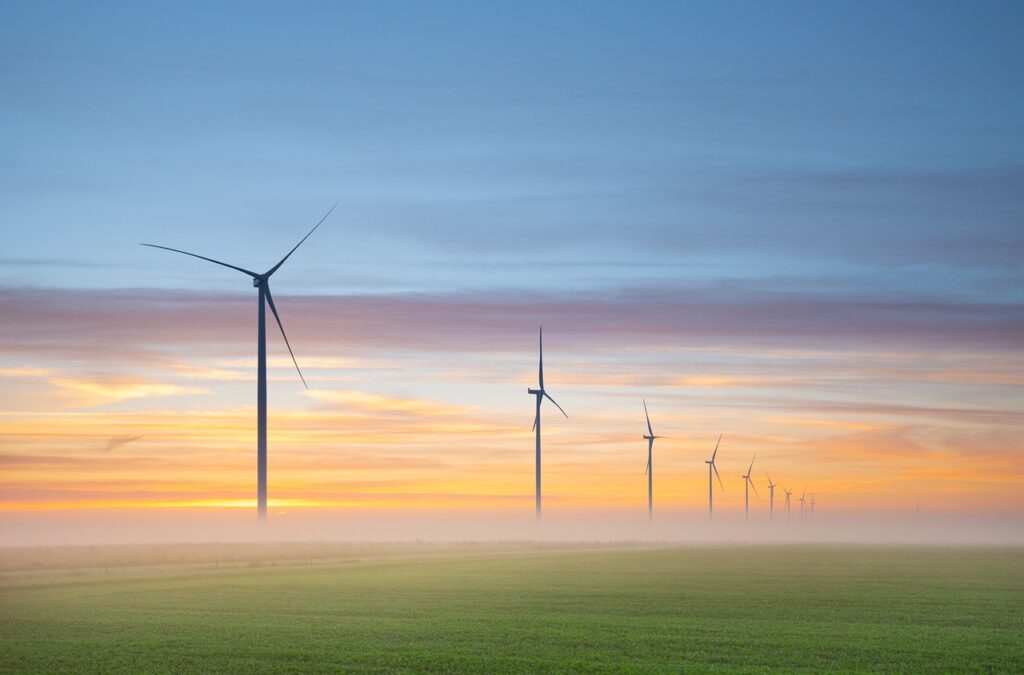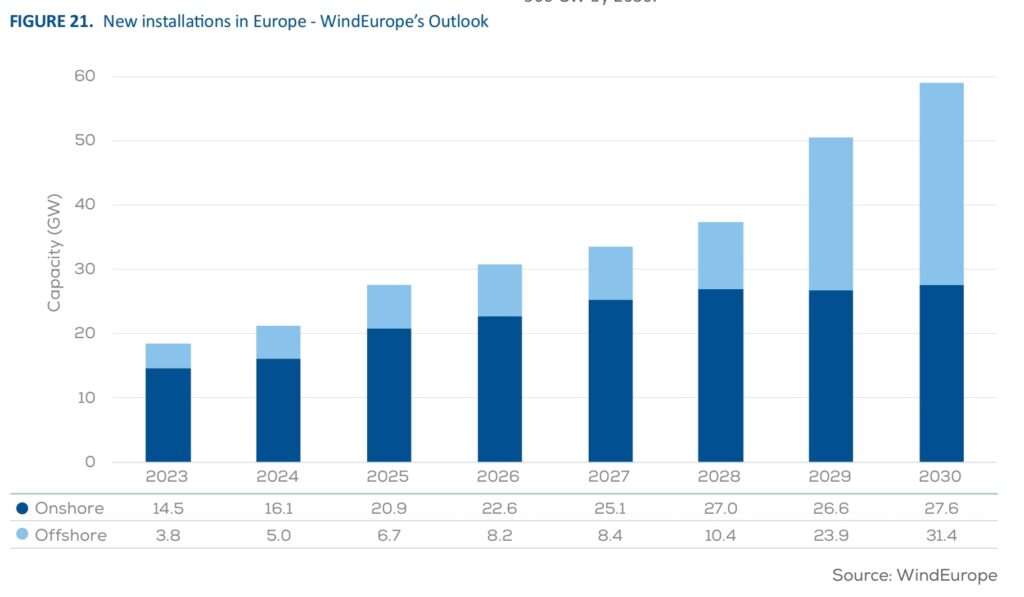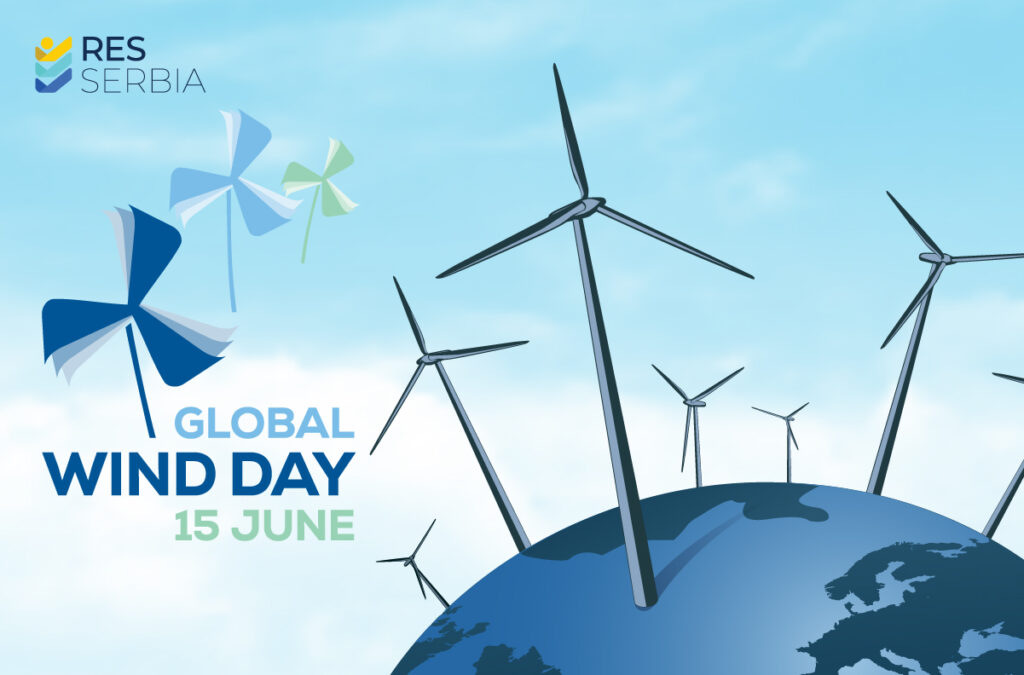Global Wind Day, which is celebrated every year on June 15 to raise awareness of the importance of wind energy for the energy transition and a greener planet, welcomes the world with the information that the cumulative power of wind farms has exceeded 1 TW, making 2023 the best year for wind so far.
Serbia is also increasing its capacity daily, so the total power of wind farms in our country is currently more than 500 MW. So far, 8 wind farms have been built in Serbia with all permits, while two are in trial operation. Also 172 wind generators were erected.
Two wind farms are under construction – wind farm Pupin in Kovačica with an installed capacity of 95.5 MW and wind farm Kostolac with a total capacity of 66 MW. The construction of three additional wind farms that were the winners of the auctions for the allocation of market premiums for renewable energy sources is expected: Vetrozelena, Čibuk 2, and Crni vrh, as well as the holding of new auctions for 300 MW of wind energy.
The Minister of Mining and Energy, Dubravka Đedović Handanović, announced that, by the end of the year, the realization of the investments that have already started is expected to increase the capacity of wind power plants in Serbia by nearly 40 percent.
The celebration of this year’s Global Wind Day is also joined by the Association RES Serbia, whose founders are companies that produce electricity in our country using the power of the wind.
The manager of RES Serbia Danijela Isailović reminds that, according to data from WindEurope, Europe receives about 19 percent of its electricity from wind energy.
– Serbia is far below that percentage, although days are becoming more frequent when the Energy flux application shows that we get about 10 percent of our electricity from the wind. All of Europe, including Serbia, expects and can gain a lot from wind. In Serbia, we expect new megawatts from wind energy from the winners of the held and future auctions, but we should also think about projects that cannot or do not want to participate in auctions, as well as about the fate of projects that receive connection conditions according to the new rules. Those challenges will be the topic of the RES Serbia 2024 conference, which will be held in September – announced Isailović.

Foto: Pixabay/Rudy and Peter Skitterians
She points out that the members of RES Serbia have built a total of 312 MW, including the largest wind farm in Serbia, Čibuk 1.
– They have the same amount under construction (Pupin, Crni vrh, and Kostolac), which will be further strengthened by the expected start of the construction of the Čibuk 2 hydropower plant. Our members have more than 1 GW of quality projects under development, some of which are fully ready for construction. The member of RES Serbia, Nordex, has a leading position as a manufacturer of wind generators, as well as our members who deal with the execution of works and the delivery of equipment. We contribute significantly to the development of the wind energy sector in Serbia – concluded Isailović.
The European Union needs 33 GW of new capacity each year
And the world is breaking records in this area, previous year was the best year for wind so far. New wind farms with a total capacity of 117 GW were built and for the first time the cumulative power of wind farms exceeded 1 TW, according to the Global Wind Energy Council.
With 75 GW of wind power in 2023, China has set a new personal record and achieved a share of as much as 65% in global wind installations. Countries that follow China with this trend are the USA, Brazil, Germany and India.
When it comes to Europe, Denmark has the largest share of wind energy in its energy mix with 56%, and Ireland with 36%. During the previous year, 18.3 GW of new wind energy capacities were installed. Of this, the member states of the European Union installed 16.2 GW, which is a record amount installed in one year, as WindEurope reported. The record holder in terms of built capacities is Germany, followed by the Netherlands and Sweden. However, the amount installed is not enough – 33 GW of new capacity is needed each year for the EU to meet its climate and energy targets set for 2030, WindEurope calculated.

Wind as a source of energy has a long history. 7,000 years ago, the Egyptians used wind energy to propel boats on the Nile River, while the Chinese in 200 B.C. invented wind-powered water pumps. In the 1st century AD, the first wind-powered wheels appeared that powered the machine, which also had a small windmill. During the Middle Ages, in what is now the Middle East, windmills were used to pump water to grind sugar cane, and the patent later spread to Europe, which used the invention to grind flour.
After the interruption of oil supply during the crisis of the 1970s, countries were forced to find an alternative source of energy and then the installation of thousands of wind turbines began.


